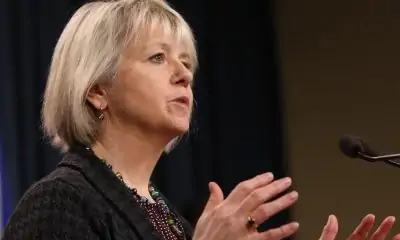Blockchain technology’s many features have made it a hit in the art world, most notably the ability to stop forgeries and give artists a cut of future sales.
But one of blockchain’s less heralded features has caused something of a rift in the art world: its carbon footprint.
Crypto art, which had been viewed as a space for artists seeking stronger resale rights and protections from copyright infringement, as well as a more inclusive scene than traditional art world institutions, is at the center of a fiery debate over its impact on the environment. And many in the community are heeding the call to abolish existing processes for greener alternatives.
“Every single artist that I’ve spoken to doesn’t want to destroy the environment,” said Stuart Campbell, an Australian artist who goes by Sutu. “That’s a great place to come to the conversation at.”
Sutu is the moderator of a group on the chat app Discord called Clean-NFTs, a channel that kicked off in the last few weeks to talk about the ecological impact of crypto art, which now has more than 1,000 members. Sutu said his investigation of crypto art’s environmental impact began when a fan of his artwork replied to one of his tweets by vowing to no longer follow anyone in the community because of the environmental toll of NFT art.
In simple terms, crypto art is digital art but on the blockchain. That crucial difference creates an incorruptible platform to sell and collect digital art. That’s because each work of art is minted with a unique nonfungible token, known as an NFT — a sort of digital certificate of authenticity, or “proof of work.”
The crypto art world has boomed in recent months, with a piece of art and its NFT recently selling at a Christie’s auction for $69 million. The artist Grimes sold $6 million of NFT-backed art.
But the physical processes many platforms use to encode the artwork onto the blockchain use electricity — and plenty of it. Artist and computer scientist Memo Akten wrote a blog post on Medium in December detailing “how ludicrously energy consuming and ecologically destructive some blockchain based activities are.”
The post took off online — not just in the art community, but also among environmentalists and technologists — pushing artists and consumers to re-evaluate how they approach the crypto art space. Akten followed up his posts and his carbon emissions calculator (which was recently taken offline because of abuse and harassment) with a guide to eco-friendly crypto art.
Akten said he thinks the community is split. Some artists and fans are disengaging entirely until sustainable solutions are created. And then there are those who deny the energy-consuming reality altogether.
“There is very strong misinformation-based propaganda in the crypto world in general to deny the ecological impact of proof-of-work-based blockchains,” Akten said. “It is reminiscent of the oil and tobacco industries.” Akten said there are also “many whataboutisms, comparing the figures to the carbon footprint of the banking industry, fast fashion, McDonald’s, etc.”
But there’s also a push to find more energy-efficient systems that preserve the upsides of crypto art.
Proof-of-work is the computing process that the crypto art marketplace has laid its foundation on, but the process uses a large amount of computing power. Sutu and others have instead pointed to proof-of-stake, a far more efficient process, as a better way forward.
Unlike proof-of-work, which guzzles electricity as computers crunch through extremely complex puzzles as “proofs” to verify transactions, proof-of-stake promotes reliability with a financial incentive — users deposit some of their cryptocurrency as proof that they own it and that they have a personal stake in the system’s accuracy.
While engineers work toward moving to proof-of-stake, “what the community itself needs is to take some ownership on what we can do in the short and medium term,” said Jason Bailey, who started the art analytics and digital art blog Artnome.
Bailey said he noticed that artists who have degrees or day jobs in tech were, in some cases, shaming artists who come from less privileged backgrounds and lean on the new crypto art marketplace to feed themselves and their families rather than as a side hustle.
“I don’t dislike either side of those groups, and it bothered me that I saw so much emotional energy and human energy being burnt up without a lot of progress being made,” he said.
And so Bailey launched Green NFTs, a bounty system for creating more eco-friendly NFT systems by encouraging people to donate money for a shared cause. For this bounty, some of the money will go to creating a consolidated body of research for artists and collectors and some will go to developers creating open-source solutions. The grant has raised more than $34,000.
Panels are also forming in response to the discourse. Sutu moderated the conversation “Eco-friendly NFTs: Are they bulls—?” on the social audio app Clubhouse last month and moderated a panel about the community response this month on Twitter Spaces.
It’s not uncommon for viral outrage to fade, but the discourse around NFTs’ environmental damage shows no signs of slowing. And it’s not inherently a doomerism mindset — it’s a turning point in which artists and gatekeepers can ask for and create more energy-efficient systems without stamping out the ethos of the decentralized creator economy.
Sutu said that while the art world might only be a small part of the broader blockchain community, it still has the opportunity to take responsibility and show a better way forward.
“We still can lead when we see an opportunity to lead within our industry,” he said. “We’ve seen alternatives available to be more energy-efficient. Why not jump on that now, why not lead the way, why not show how the art community can influence those other industries to follow suit, especially if they are interacting with the blockchain?”


















